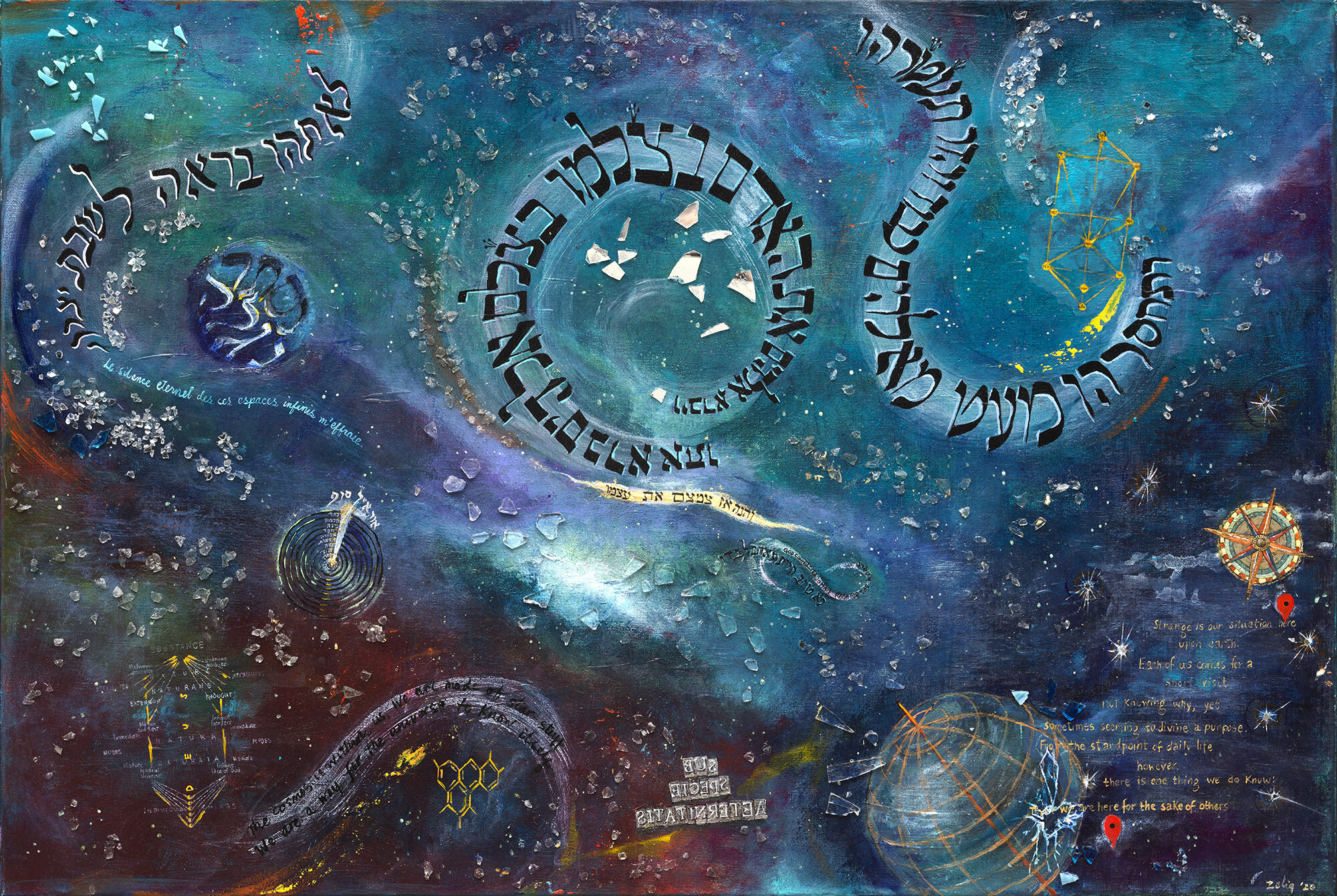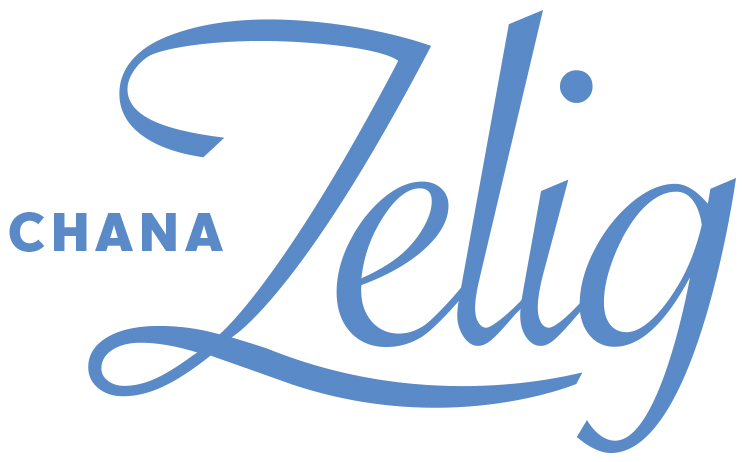HAMSA, MIZRACH & KABBALAH
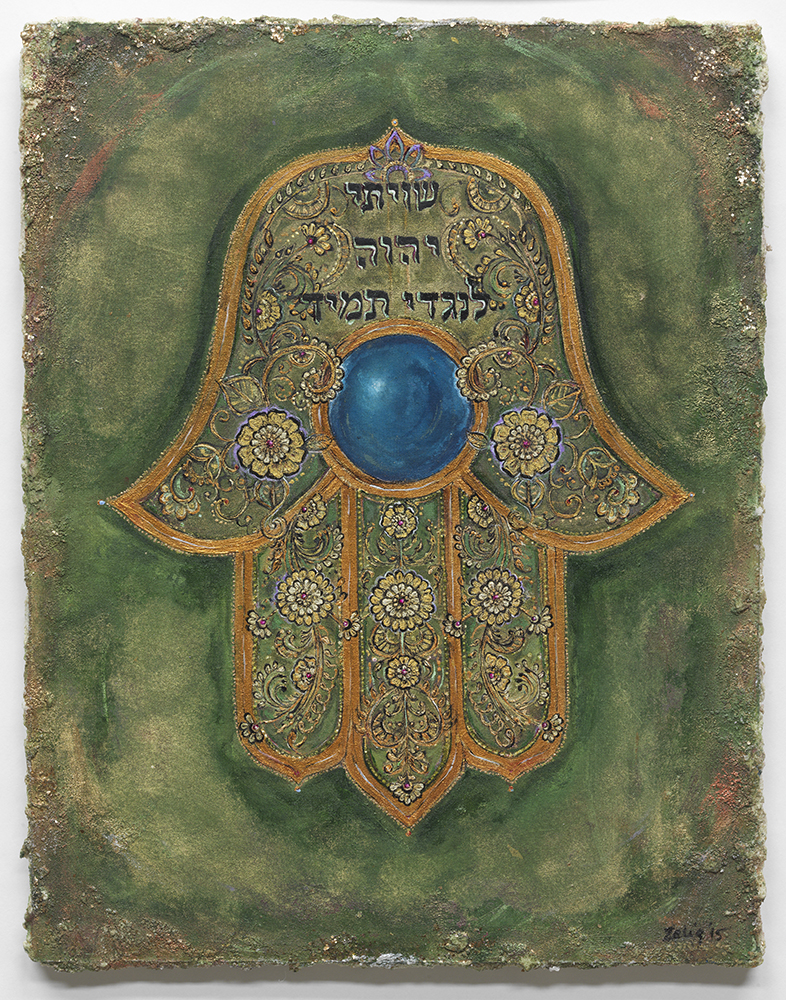
15” x 18” Limited edition, hand-embellished print on Hahnemühle German Etching paper. The hamsa is a hand-shaped charm meant to ward off the evil eye. The word is derived from the Hebrew and Arabic words for “five.” A symbol of God’s watchfulness, this Hamsa is inscribed with the verse, “I have set the Lord always before me” (Psalms 16:8.) The design is a Henna pattern, an art form that has been used since the Bronze Age to adorned hands.
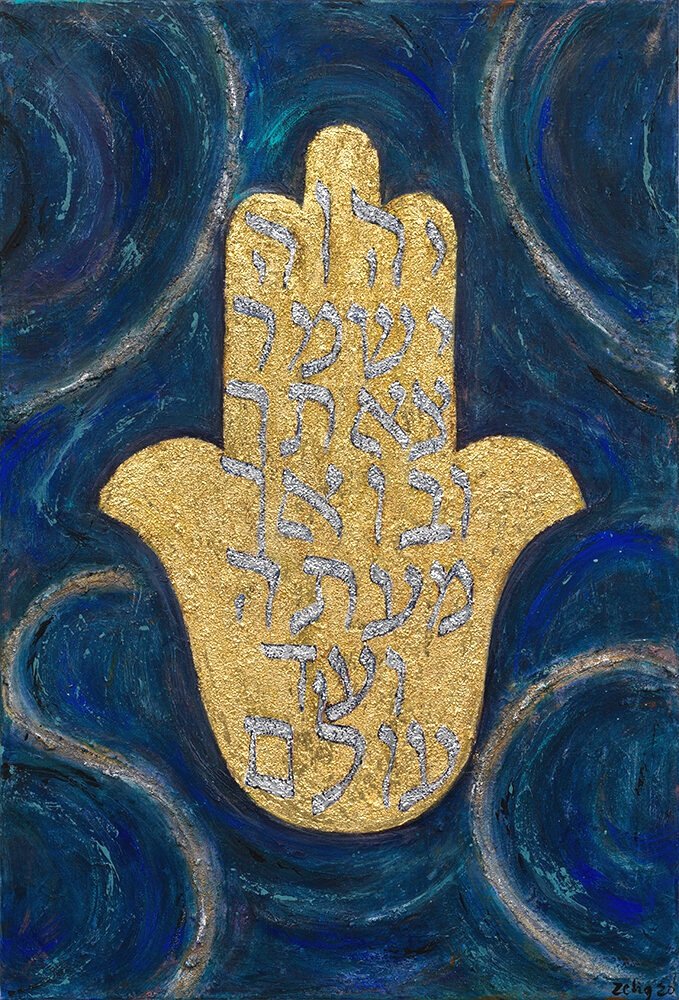
36” x48” Handmade acrylic paint, glass beads, gold leaf and sand on canvas. “May God watch over your going out and coming in forevermore.” Psalms 121:8
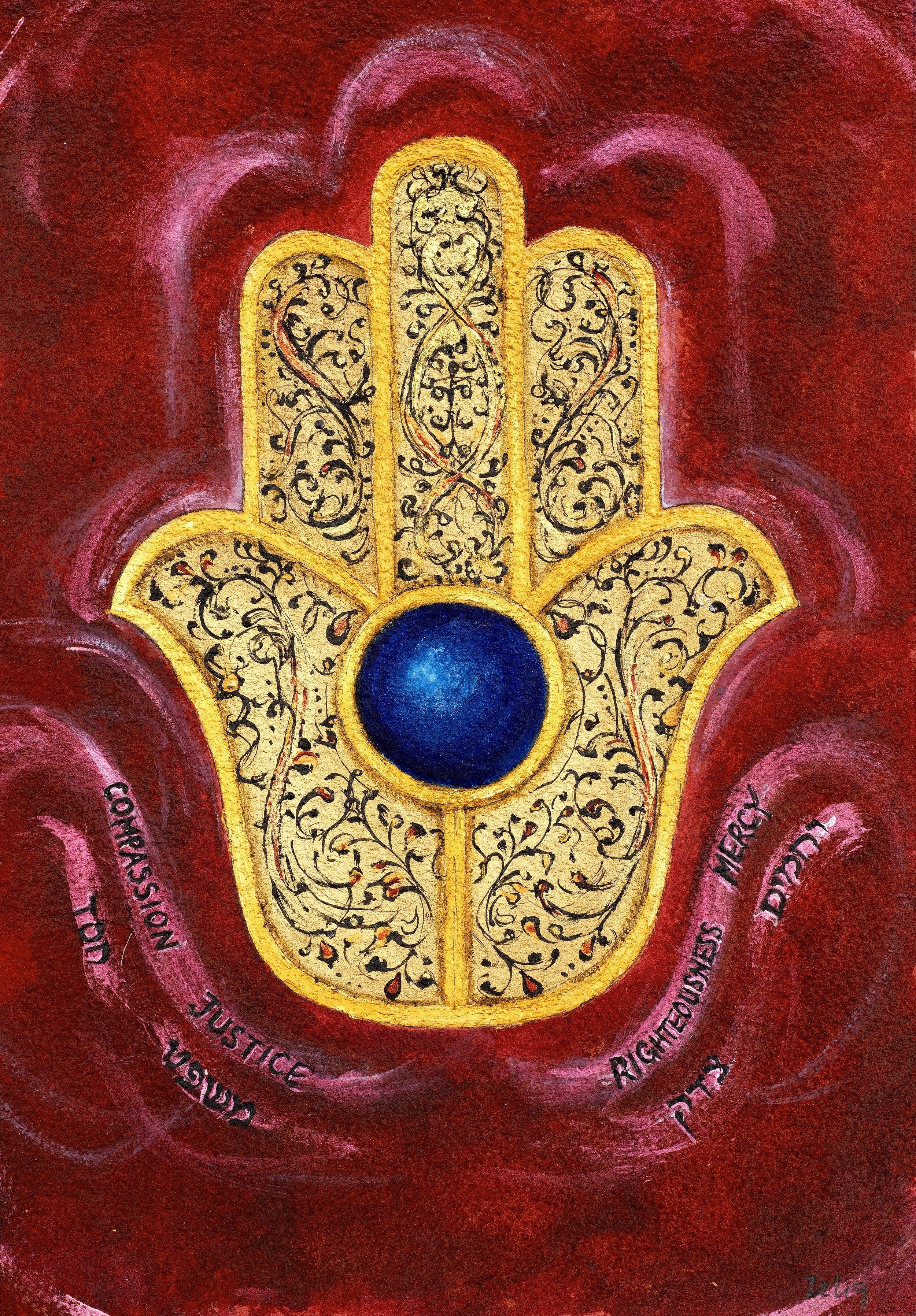
Just as a Hamsa is is said to provide divine protection, the Hebrew prophets tell us that the Jewish people are preserved through acts of compassion, justice, mercy, and righteousness.
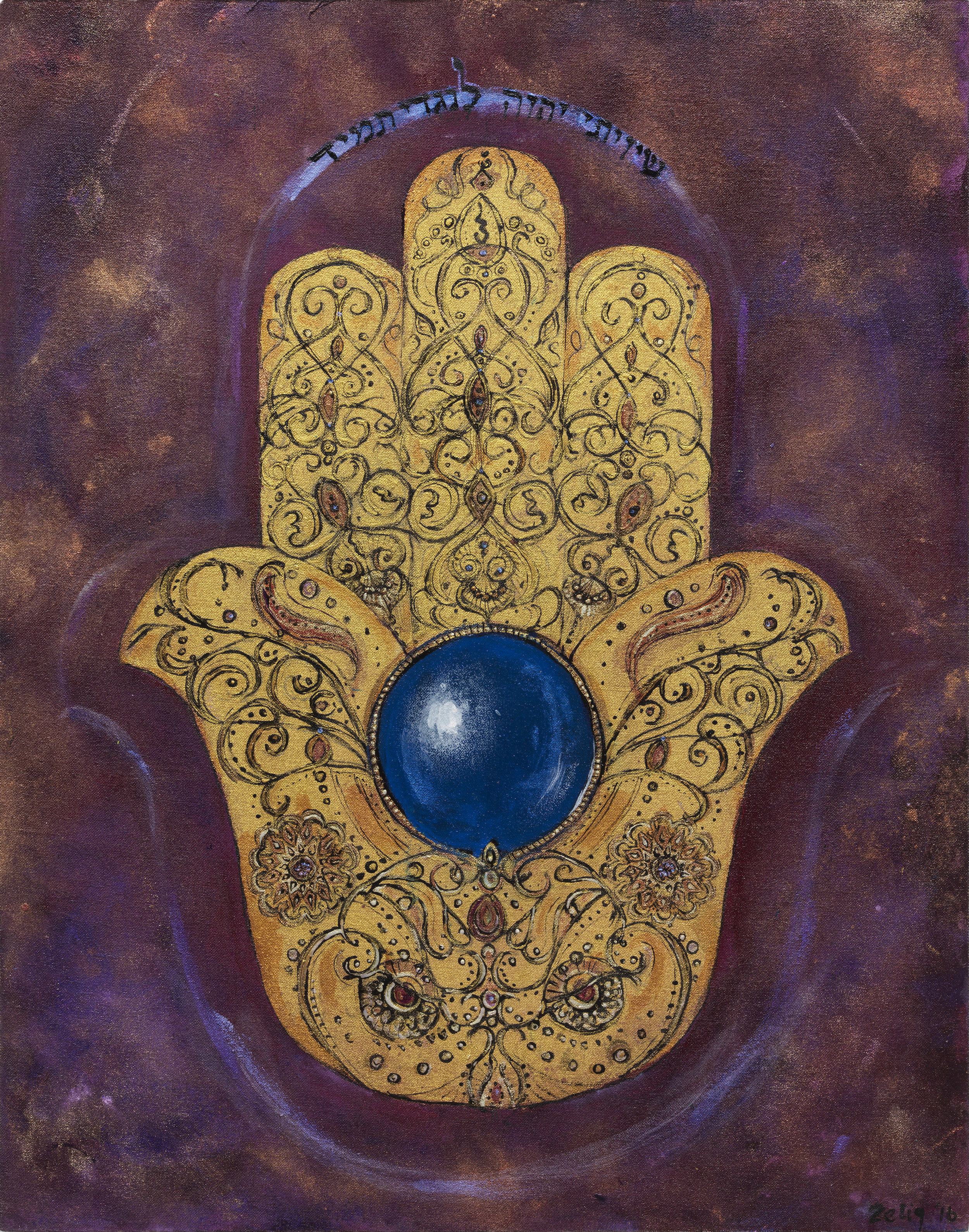
10”x14” Acrylic on archival panel. The hamsa is a hand-shaped charm meant to ward off the evil eye. This symbol is common throughout the middle-east, and is derived from the Hebrew and Arabic words for “five.” Often, it includes a blue stone or eye to symbolize God’s watchfulness.
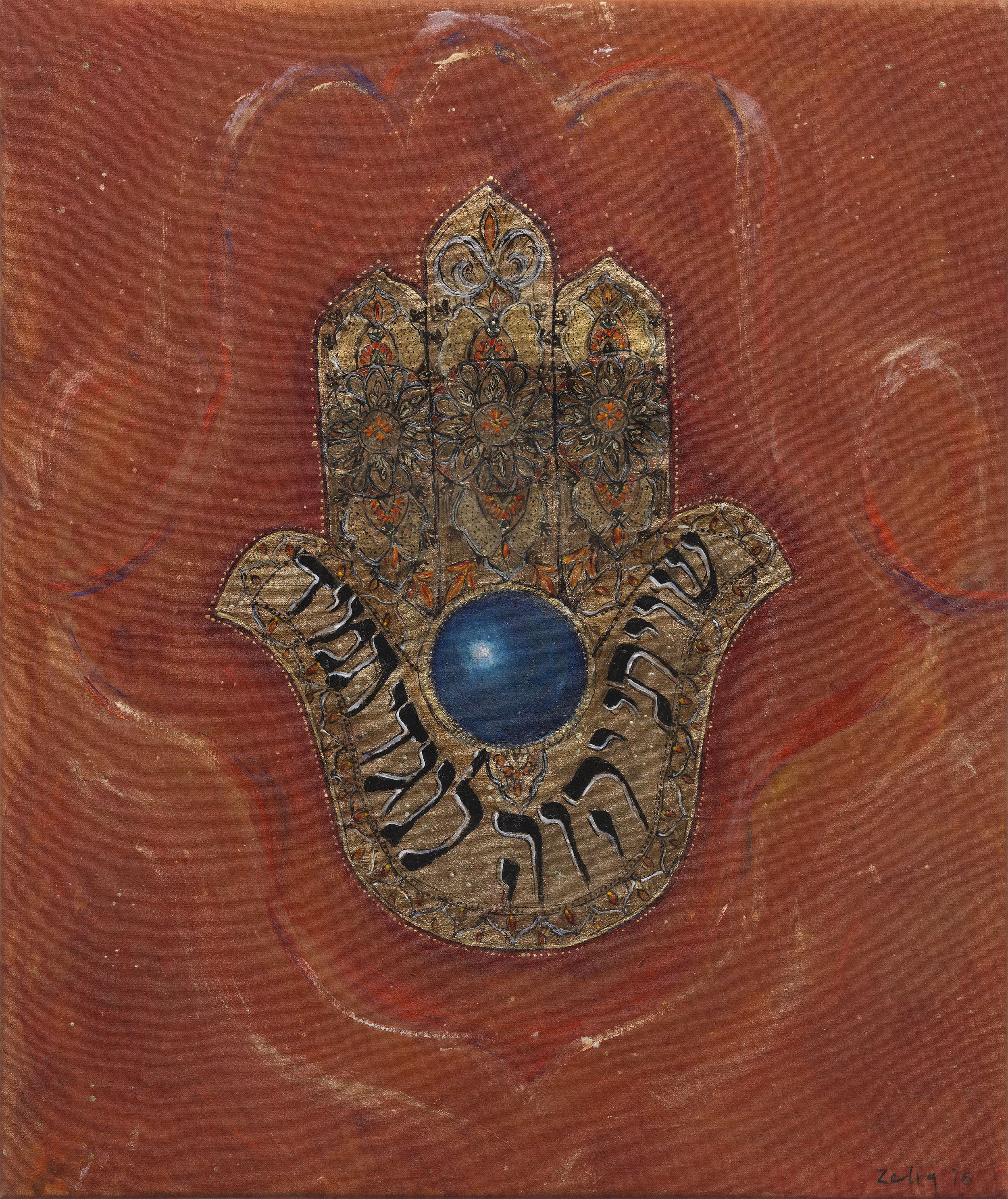
15” x 18” Limited edition, hand-embellished print on canvas The hamsa is a hand-shaped charm meant to ward off the evil eye. The word is derived from the Hebrew and Arabic words for “five.” A symbol of God’s watchfulness, this Hamsa is inscribed with the verse, “I have set the Lord always before me” (Psalms 16:8.) The design is a Henna pattern, an art form that has been used since the Bronze Age to adorned hands.
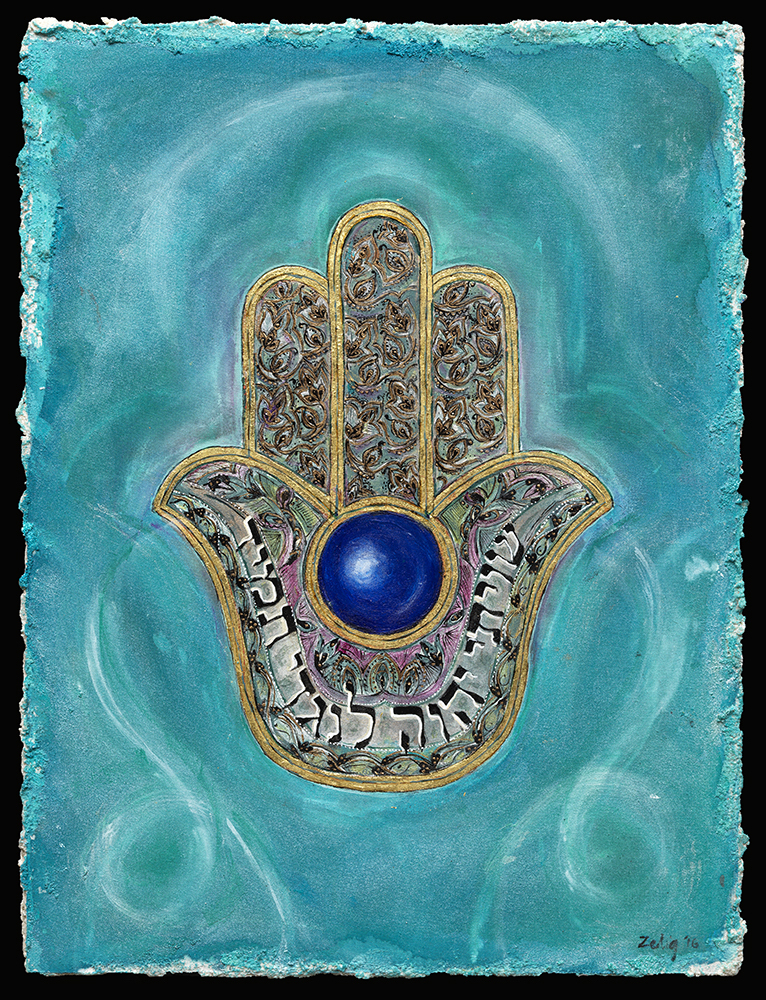
15” x 18” Limited edition, hand-embellished print on Hahnemühle German Etching paper. The hamsa is a hand-shaped charm meant to ward off the evil eye. The word is derived from the Hebrew and Arabic words for “five.” A symbol of God’s watchfulness, this Hamsa is inscribed with the verse, “I have set the Lord always before me” (Psalms 16:8.) The design is a Henna pattern, an art form that has been used since the Bronze Age to adorned hands.
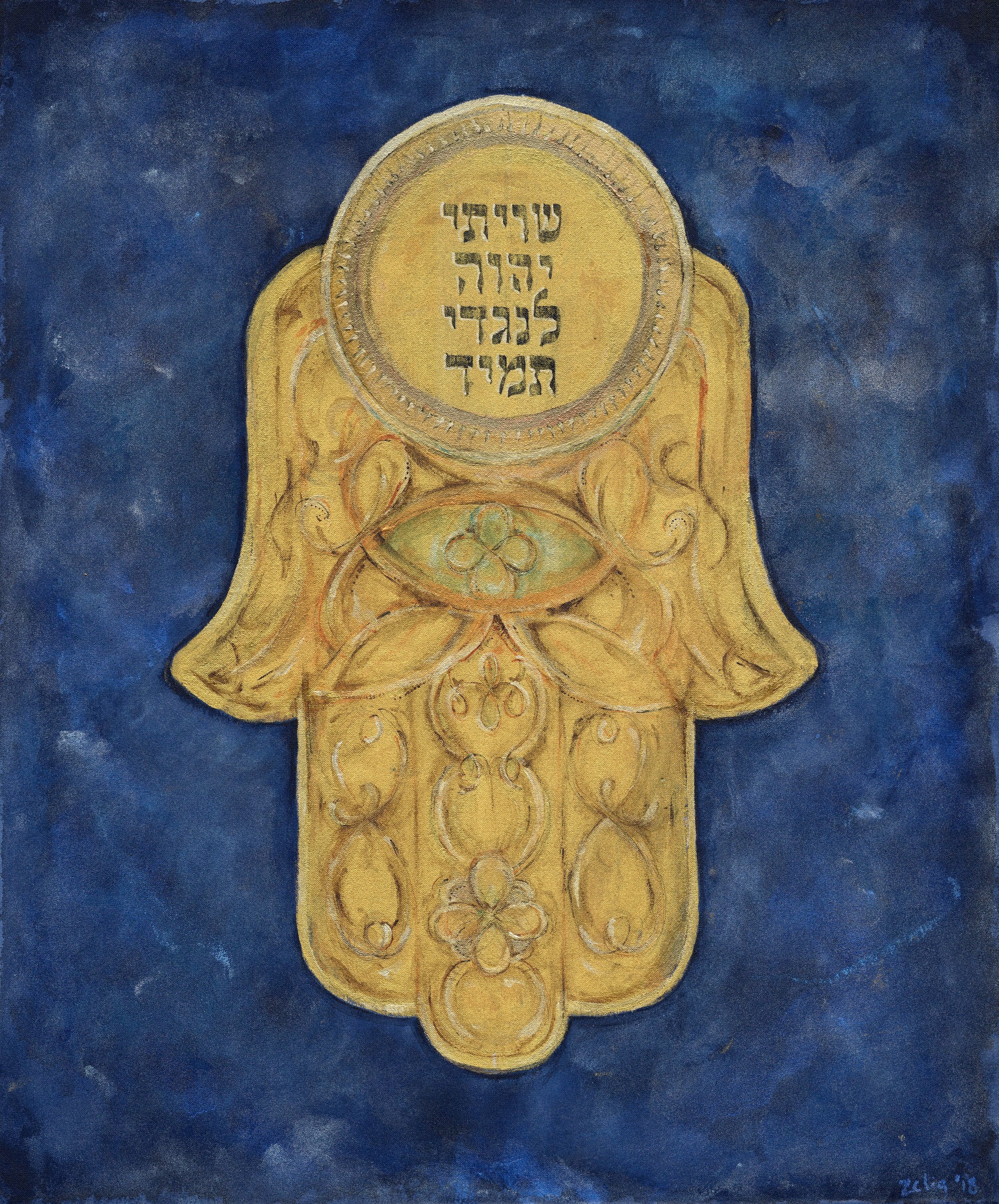
A tradition in many Jewish homes is to hang a plaque inscribed with the Shiviti, “I have set the Lord always before me” (Psalms 16:8.)
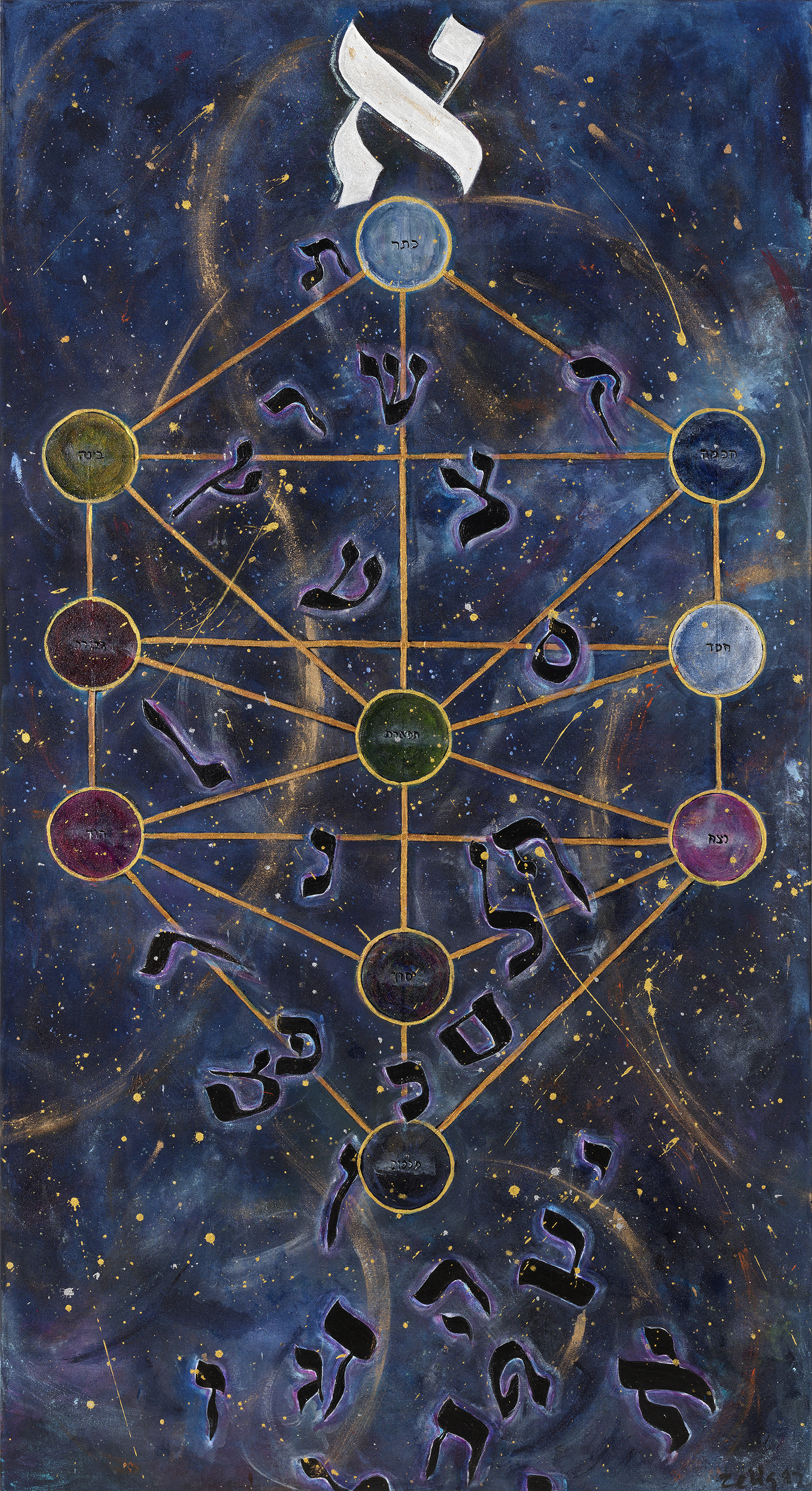
56” x30” Acrylic and metallic paint on canvas. The defining principle of Kabbalah, Jewish mysticism is that the world is healed through human connections and the Sephirot, Divine Emanations, illustrated in the Tree of Life formation. The letter Aleph stands for ayn sof, the Infinite. The gold flecks evoke the “breaking of the vessels” in Kabbalah, where divine sparks were scattered, and our job on earth is to gather them.
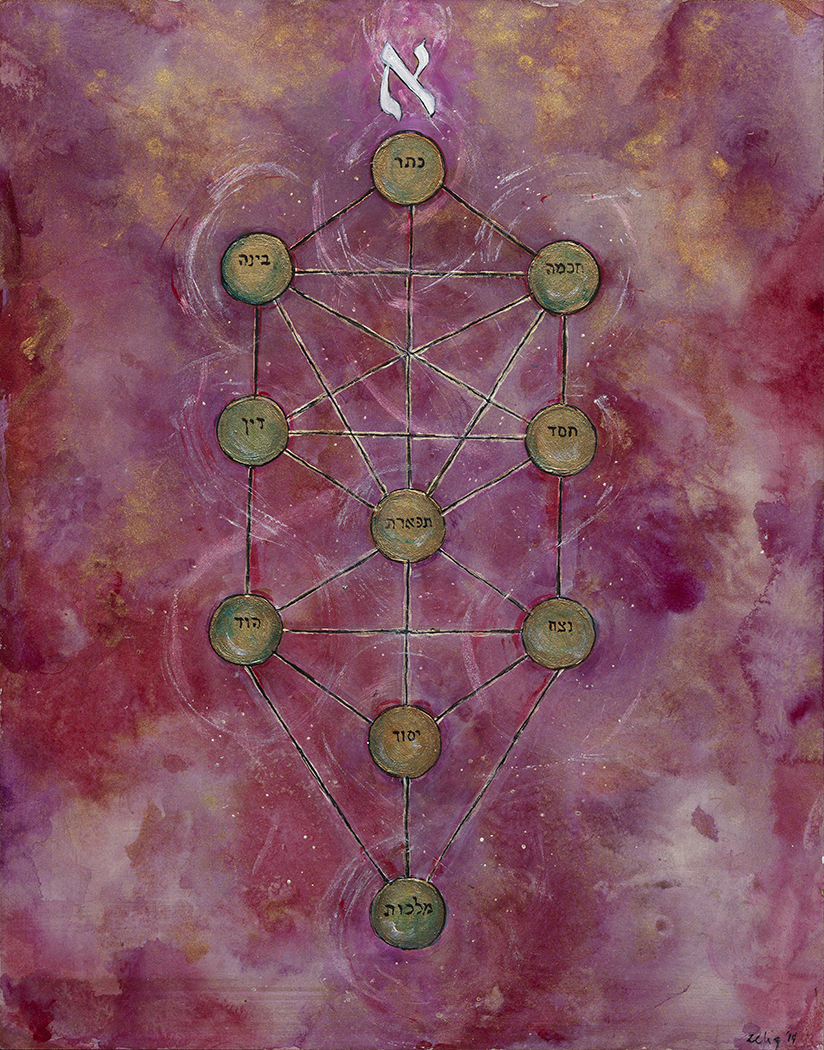
12”x15” Acrylic on archival panel. The defining principle of Kabbalah, Jewish mysticism is that the world is healed through human connections and the Sephirot, divine Emanations, illustrated in the Tree of Life formation. The Hebrew letter Aleph stands for ayn sof, the Infinite.
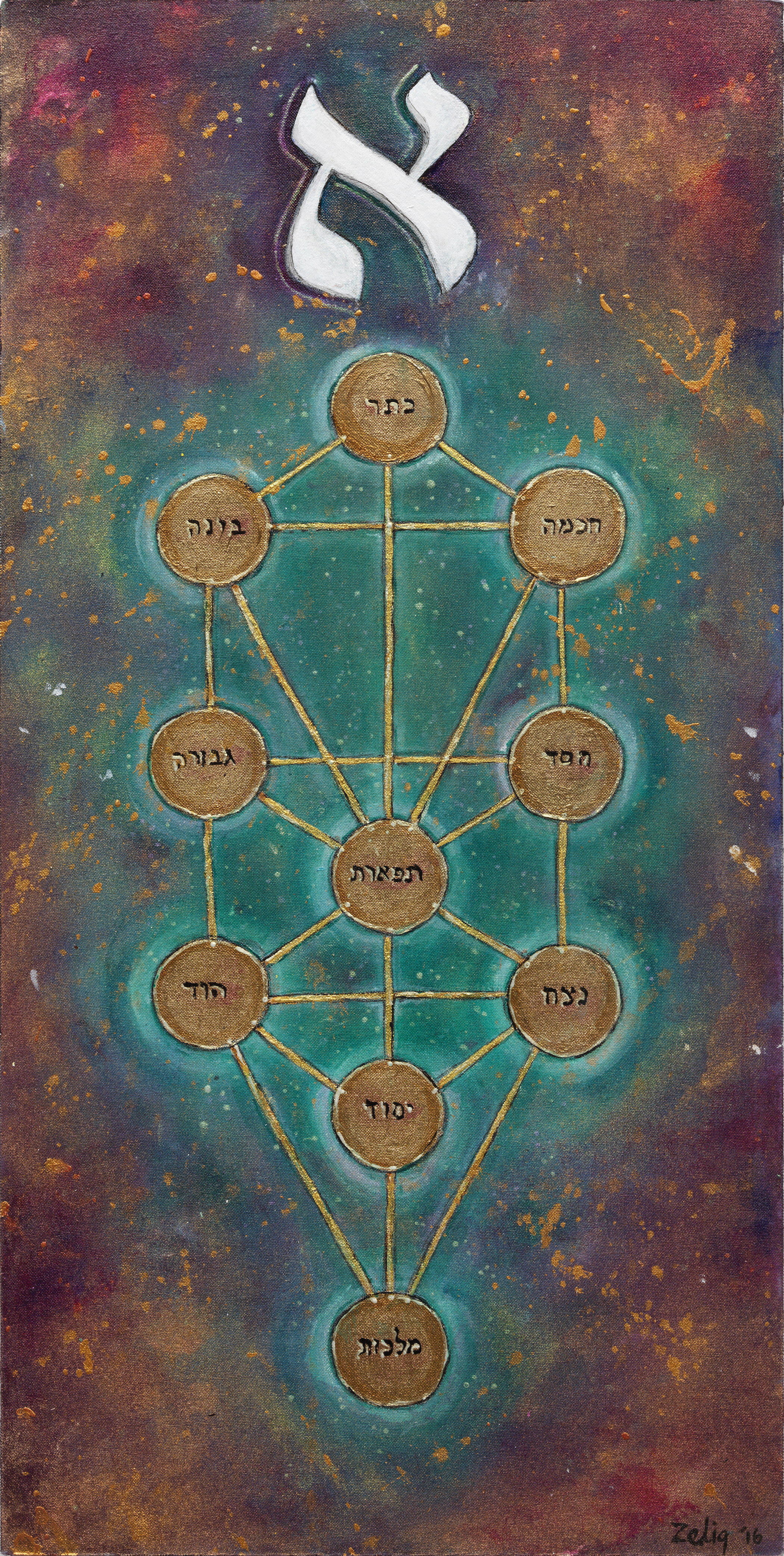
8”x16” acrylic and metallic paint on archival panel. The defining principle of Kabbalah, Jewish mysticism is that the world is healed through human connections and the Sephirot, divine Emanations, illustrated in the Tree of Life formation. The Hebrew letter Aleph stands for ayn sof, the Infinite.
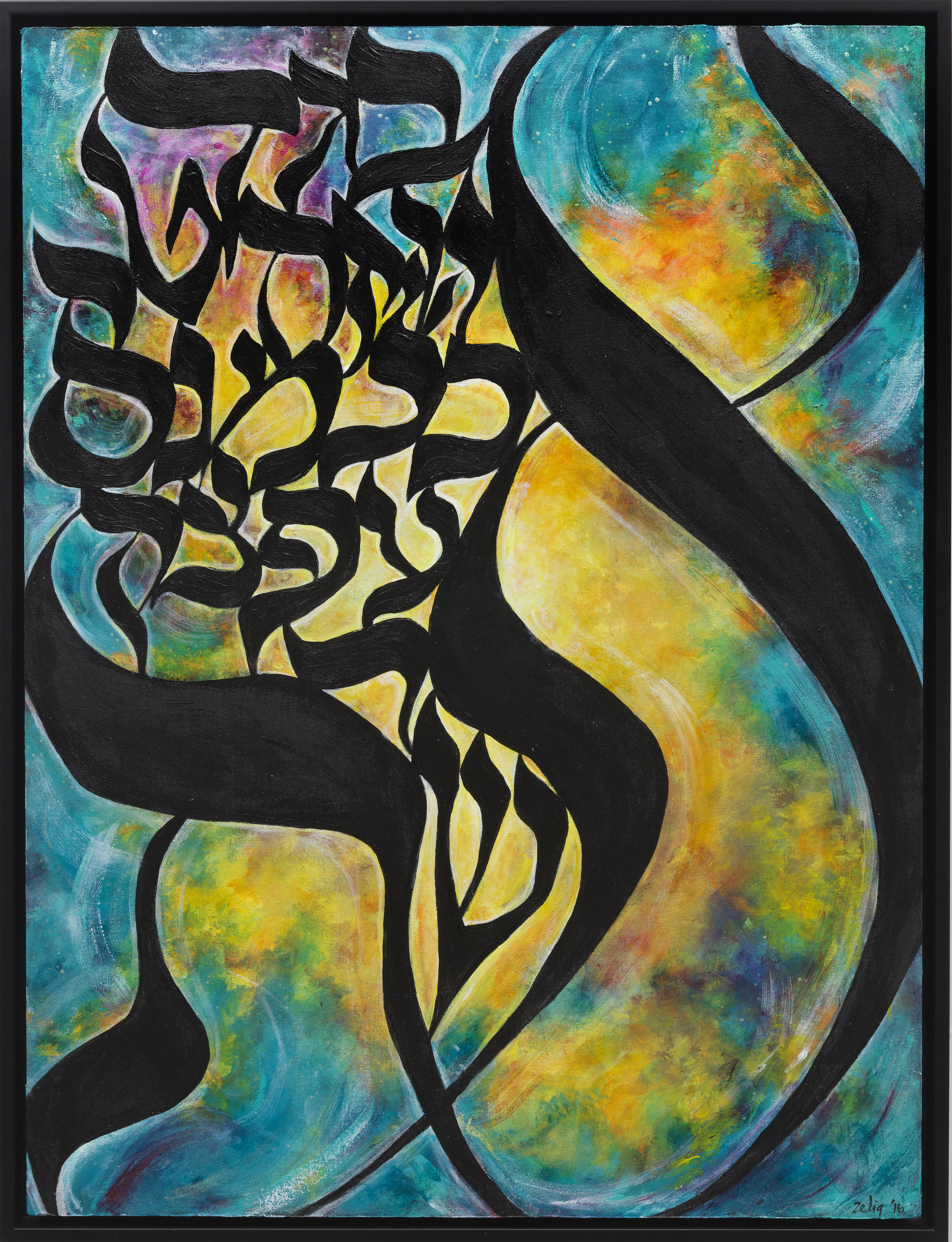
16”x20” Acrylic on Wood panel. Kabbalah, Jewish mysticism, tells us that the twenty-two letters of the Hebrew alphabet are holy and were created before the world. They have been subjects of contemplation and Jewish meditation for centuries. The letters here are interconnected and arranged between the first and last Hebrew letters.
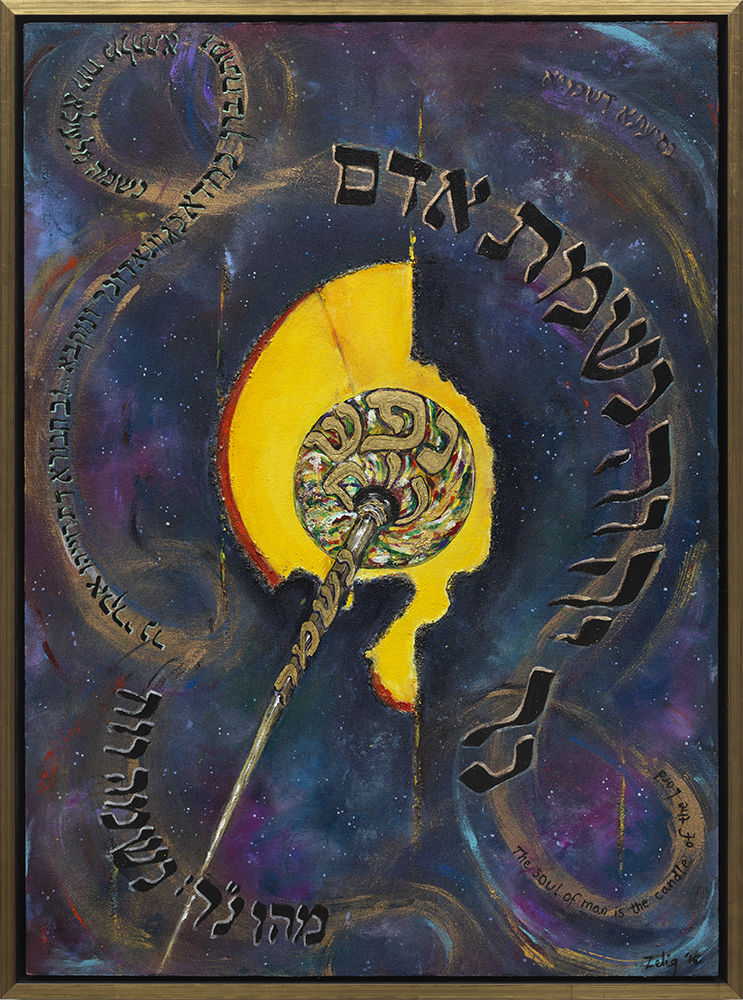
Kabbalah, Jewish mysticism teaches that there are three parts to the soul, imbued by God in the same way a glassblower forms a vessel. Alongside the image are the verses, “the mitzvah (commandment) is like a candle, and the Torah is the light.”
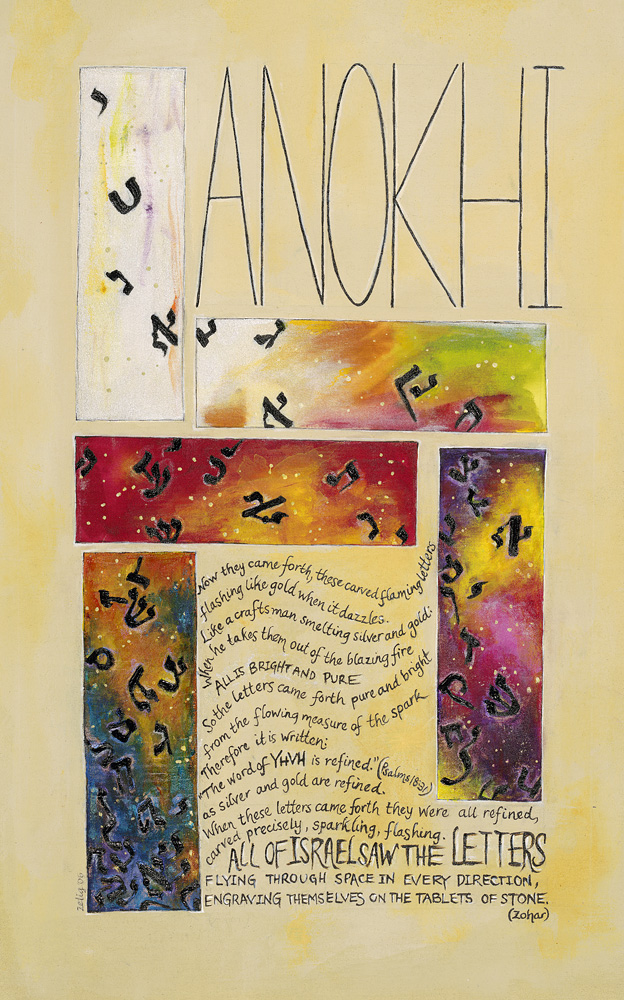
This painting is based on an account in the Zohar, the central book of Kabbalah. At the revelation at Mt. Sinai, letters and sparks were flying all around until they assembled themselves onto the tablets to form the Ten Commandments. Anokhi, I am, is the first word.
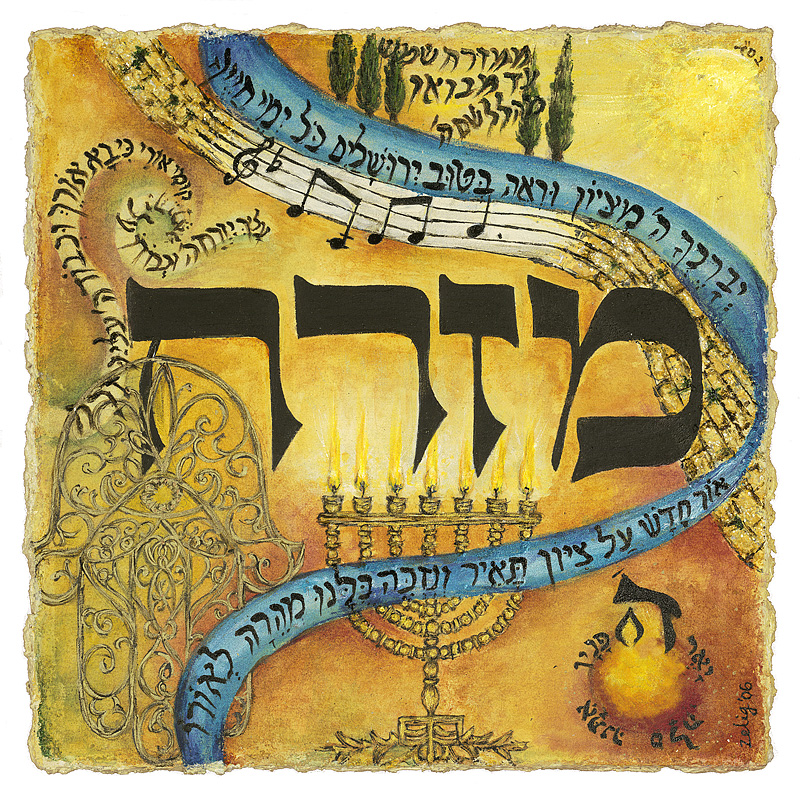
In many Jewish households, a Mizrach (east) plaque is hung on an eastern wall to indicate the direction to face during prayer. Like many traditional ones, this Mizrach includes the Shiviti, “I have set the Lord always before me.” (Psalms 16:8) The images and words in this painting represent hope for peace and well being in Jerusalem.
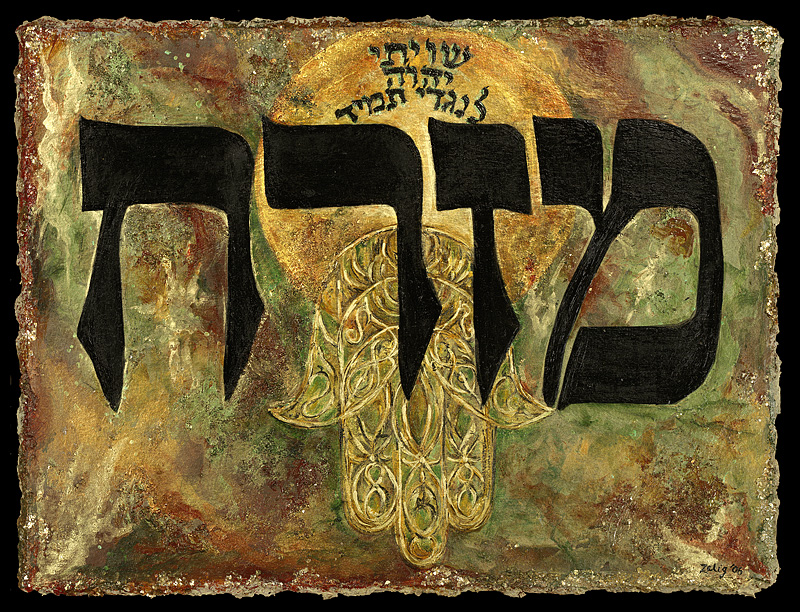
In many Jewish households, a Mizrach (east) plaque is hung on an eastern wall to indicate the direction to face during prayer. Like many traditional ones, this Mizrach includes the Shiviti, “I have set the Lord always before me.” (Psalms 16:8)
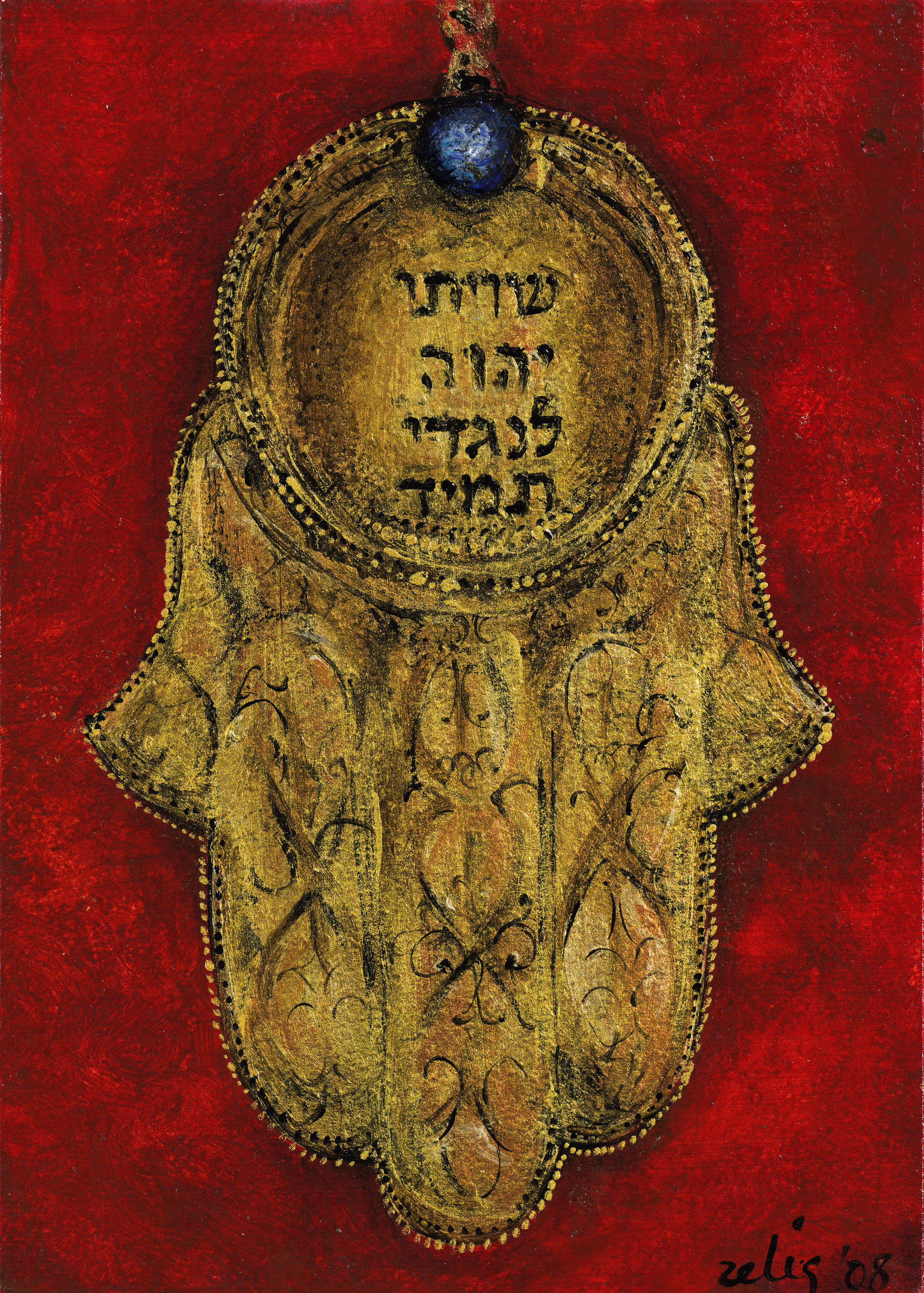
Print on paper. A tradition in many Jewish homes is to hang a plaque inscribed with the Shiviti, “I have set the Lord always before me” (Psalms 16:8.) The hamsa is a hand-shaped charm meant to ward off the evil eye. This symbol is common throughout the middle-east, and is derived from the Hebrew and Arabic words for “five.” Often, it includes a blue stone or eye to symbolize God’s watchfulness.
